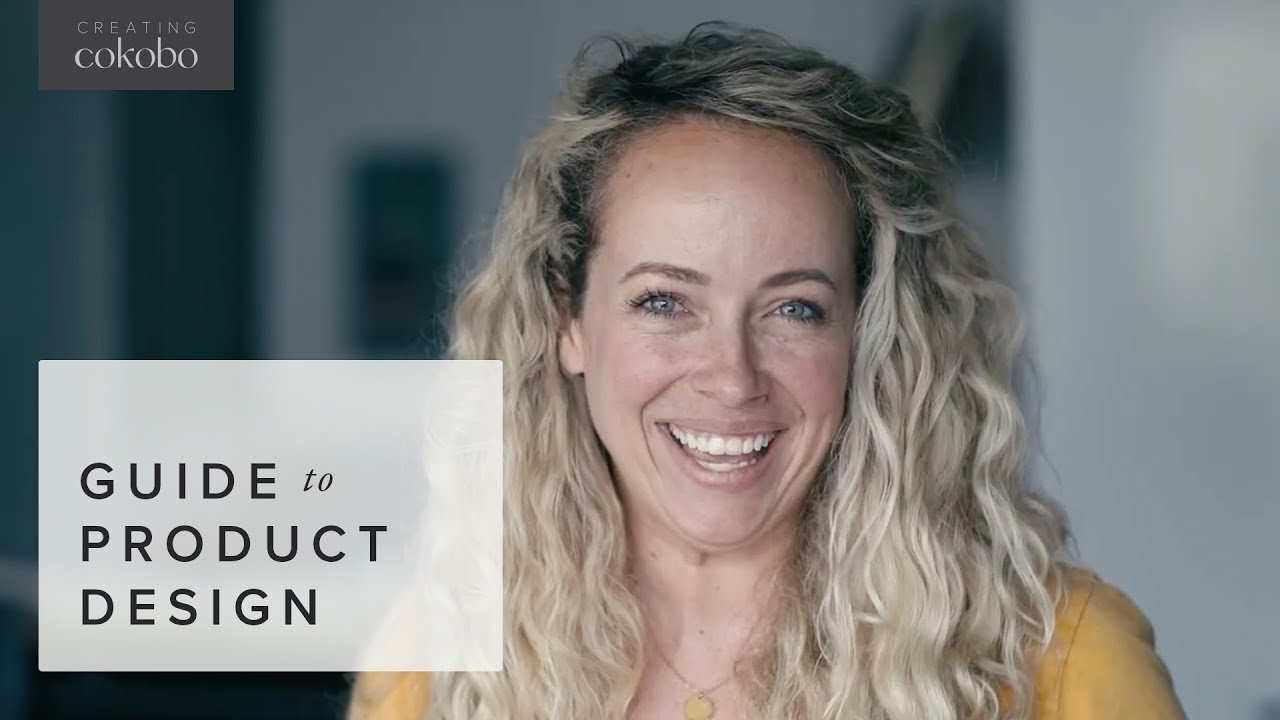8 Steps to Take an Idea and Turn it Into a Prototype
It is hard to imagine that 10 years ago, creating Cokobo was just an idea. Today it is a brand that has taken root and is growing— fast! I cannot believe it.
I decided to document my journey as I create Cokobo designs and products. You can find the entire first season of Creating Cokobo on Youtube. Since the wrap of season one, I have been working tirelessly to launch a Cokobo lighting product line.
Have you ever had an idea and wanted to know how to turn it into a prototype, but didn’t know where to begin? Let’s take a look at the steps I took to start Cokobo’s first lighting product line. I will help get you started and share how you too can get your ideas into the hands of potential manufacturers.
1. Start with an Idea
If you’re like me, you get inspired all the time. You can be out with friends or alone at a coffee shop and have little ideas floating around in your head. I remember holding a spatula once and asking myself, “who decided the shape of this utensil?” and “who came up with the design?”
My mind was quick to come up with ideas to improve the shape, material, and construction. How could I improve the function of this ordinary household product? That is the heartbeat of Cokobo: elevating the ordinary. Ideas are the cornerstone to elevating every great product you and I use every day. So the first step to launching a product is getting an inspired idea.
Personally, I am constantly thinking about lighting designs. Full confession, sometimes I catch myself daydreaming about new ways to elevate the lighting in the room I am in and lose track of what I am supposed to be doing. The ideas are often inspired by a shape, material, or something in nature that I will look at and visualize how it could become a light fixture. It’s fun but also can be incredibly distracting.
How do we take a fun lighting idea and make it a reality?
2. Start to Sketch
Once the ideas start coming, begin your sketches. Create quick preliminary sketches to get inspired ideas out of your head and onto paper. This part of the process either gives me instant relief or major frustration. Sometimes I can sketch what I see clearly and I am relieved to have it documented. Other times the process can be incredibly irritating because my sketching skills aren’t able to properly convey the concept and I feel like I can’t stop until I get it right, Ugh!
The greatest thing to keep in mind: don’t let your less-than artistic drawing skills stop you from sketching. If you have to start with stick figures and basic shapes that’s okay. I still find that many of my preliminary sketches come out in simplified shapes and lines— not exactly Van Gogh. It is okay because these freehand sketches are not intended to represent your final prototypes.
3. Iterate Your Design
No matter what your first sketches look like, keep it up and continue to rough out a few drafts. Iterate your designs on paper or in software like SketchUp. Consider running these sketches by a trusted friend or co-worker who can offer some constructive advice for your concepts.
4. Begin the Build
Once you feel good about your sketches or 3D renderings, begin your build. In this step, you will work to create 2D, 3D, or even 4D models of your sketches. This may be my favorite step. I don’t like staying too long in the sketching mode before cutting some materials and building. Grab what you can to start even if all you have is paper, tape, and scissors.
Watch me build out a lighting sketch in my hotel room with supplies from a nearby craft store.
Creating a basic form is vital to developing the idea. This model build allows you to see the sketch in physical space and give you a feel for the three-dimensional aspects. It is in this stage that I often find myself inspired with even more ideas and improvements.
5. Refine with Rapid Prototyping
Now you are ready to refine the models you created. This should take a little longer than the preceding steps. Instead of creating a quick draw or build, now you are going to spend time refining your model by building it out in different sizes, shapes, variations, and materials. Make edits with each pass. Create a prototype and then give yourself room to discover what you like and dislike. Change it up for the next rendition. Giving yourself some creative freedom here leaves space for new sparks of inspiration!
This is the time that usually spurs on other design ideas and directions.
It is important to give yourself the grace to derail.
Staying on one design can be hard. Sometimes I stay on track, but other times I veer off and follow my gut in a whole new direction. If I decide to stick with my original idea, I try to document the other directions that came to mind during the process. Sketch them out quickly and take a few notes about those ideas.
6. Rebuild in 3D
Now rebuild your model in 3D. Your 3D build can take place with another physical build or digital rendering. There are some instances when I don’t build another physical 3D model. In those cases, I enjoy rebuilding my sketched designs using SketchUp.
One benefit to rebuilding designs digitally is the ability to quickly make changes to size and proportions. This step would take me hours in the physical build but only takes minutes on the computer. I do not recommend for you to ideate digitally in 3D without building in real life. There is nothing like holding the 3D forms in your hands.
Ultimately, I recommend creating a physical model. After this, I refine and expand upon the idea in a digital space. Don’t be afraid to send out photos of your build to trusted friends for feedback. If you have connections to people in the industry you are building for, send them photos for feedback.
7. Recreate Your Prototype
Now it is time to make physical rebuilds based on some of the feedback you receive. This is the prototype I spend the most time on. I use higher-end materials to piece together the prototype and bring the idea to life. It is important to use materials that look as close to your desired result as possible.
You have completed this step when you are convinced your concept will work and you enjoy seeing it come to life.
8. Map Out Specifications
Now it is time to create your specifications or spec sheet. If needed, redraw your prototype concept in 3D (or all sides of the item in 2D). Document specifics like dimensions, materials, installation types, lamping types, accessories, and finish options. This is what will become a package you submit to manufacturers.
But before you do that, congratulations are in order— you’ve completed your prototype!
Working with Manufacturers
From here, you will send your package of drawings, dimensions, basic specifications, and the prototype models (or images of the models) to manufacturers for pricing options.
This is the part of the process where manufacturers will weigh in on your design and make their suggested changes for manufacturing. A lot of revisions and edits will be made in the process of manufacturing, but with hard work and a bit of luck, your product will become a reality.
Let’s Connect
If you have a product idea and are starting this process, tag me on social media @cokobostudio. I want to hear from you! I want to celebrate your successes and champion you when you need a little more encouragement. Remember, every great design starts with one great dream. Keep dreaming, keep watching and keep creating.






